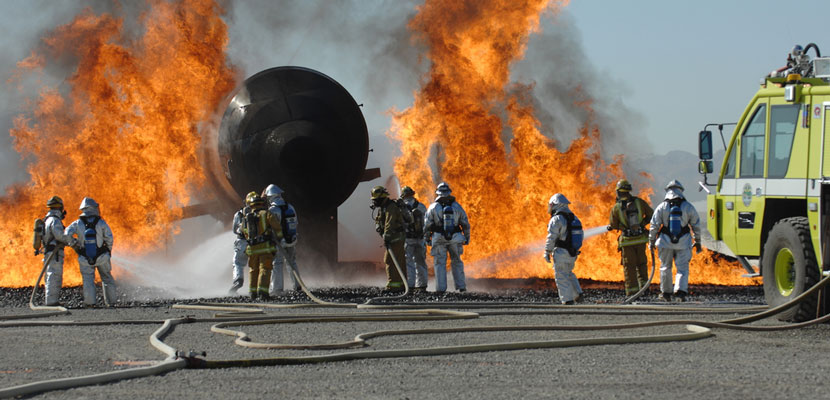
You might also like:
I recently talked about the potential for computers to replace human air traffic controllers and why that’s simply not plausible given today’s technology. The main reason it remains such a dubious concept is the inability of computers to adapt on the fly to abnormal situations, namely emergencies. Most air traffic scenarios are rather routine, but controllers earn their paychecks by being ready to respond at a moment’s notice to a potential emergency, working in conjunction with pilots and first responders to ensure the safest outcome possible.
Not all emergencies are as dramatic as they are portrayed in movies or on TV. I once had a C-130, a four-engine military cargo plane, report the loss of an engine. They declared an emergency and said their intentions were to continue to their destination, about 150 miles ahead, on their remaining three engines. There was no panic and no real change in the service I provided, except, of course, I cleared them on a more expeditious and direct route to minimize their remaining flight time. It’s quite possible that some of the people on board weren’t even aware of the situation — that’s how much of a non-event it was.
There’s an old aviation joke I’ve heard countless times about a B-52, a large military bomber with eight engines, declaring an emergency after losing one of them. Upon being told he’d have to discontinue his approach and clear the runway for the inbound emergency, the pilot of a single engine fighter jet remarked, “Ah yes, the dreaded seven engine approach.”
That is to say, like many things in aviation, the official declaration of an emergency is oftentimes more of an official paperwork thing or a precautionary measure meant as a bit of CYA (cover your ass), as we call it. The odds are overwhelmingly likely that everything is going to end well regardless, but declaring an emergency just makes sure everyone is on the same page and has all the resources they need to effectively work toward the common goal.
One of the primary jobs of an air traffic controller during an emergency is to forward pertinent information to the fire and rescue personnel who will likely be responding to an emergency landing. Information like the number of people on board and the amount of fuel the plane has remaining can allow them to be even better prepared to respond and ensure the rescue of those on board.
An emergency situation changes very little about how the pilots or air traffic controllers do their jobs in accordance with their training, but rather it simply allows the modifying of some otherwise basic rules or procedures if necessary to effect a safe outcome. For example, an aircraft in distress will be given a more preferential handling and go to the front of the line, so to speak, even it if it impedes other traffic flows or delays other aircraft. Without an official emergency declaration, that aircraft would have to take its place like everyone else, on a first come, first serve basis.

In fact, when it comes to declaring an emergency, it’s not only the pilots who can make that determination. Airline dispatch personnel and air traffic controllers both have the authority to declare an emergency on behalf of a pilot or flight crew.
Why would we as controllers have to declare in lieu of the pilot? Though it’s a point emphasized repeatedly in pilot training, some new or inexperienced pilots are hesitant to declare an emergency by thinking they might get in trouble or suffer some consequences after the fact. While that’s not true, the stigma is still such that it prevents pilots from asking for the help they need in a situation that might be construed as a borderline emergency. Instead of trying to solicit the pilot to say the words themselves, we can simply declare an emergency for them, sometimes without even telling the pilot we’ve done it. That gives us the legal and procedural basis on which to provide services to an extent we might not be able to otherwise provide in a non-emergency situation. Again, it’s a CYA thing that allows me, as the air traffic controller, a little more latitude in doing everything I can to ensure a safe outcome, and it’s almost always worth the negligible amount of paperwork that must be completed after it’s over.
Bottom Line
The fact that the US has both the busiest and the safest national airspace system in the entire world is not an accident. It takes thousands of professionals working together every day and training simultaneously to ensure their skills stay on point. Though emergency situations are indeed rare, the unpredictability with which they happen means it’s important for all aviation safety professionals to be ready to react to one at a moment’s notice. As a traveler, you can rest assured that those of us working behind the scenes are well-trained and well equipped to make sure you make to terra firma safely.
Source: thepointsguy.com



